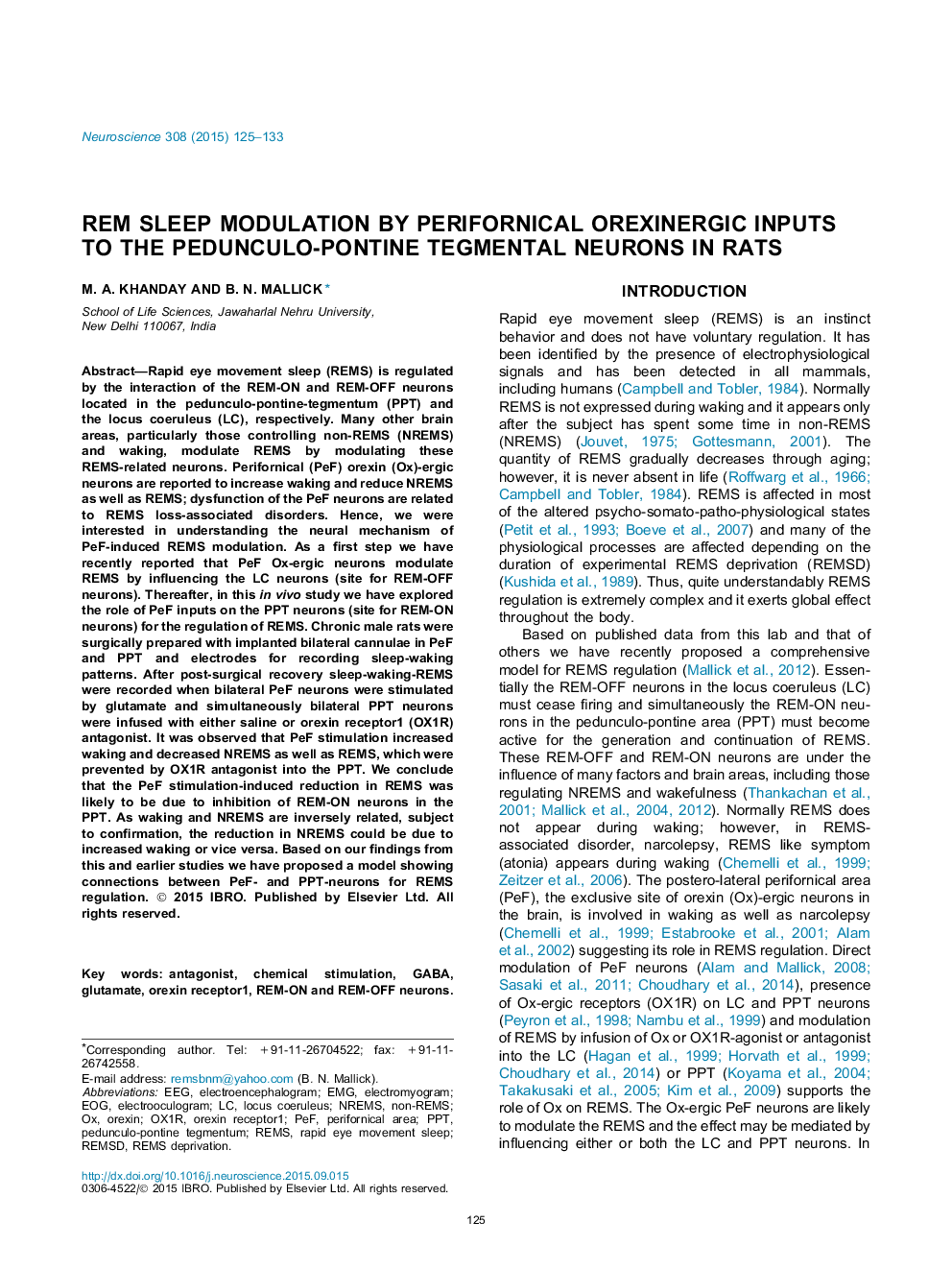| Article ID | Journal | Published Year | Pages | File Type |
|---|---|---|---|---|
| 6271914 | Neuroscience | 2015 | 9 Pages |
â¢Glutamatergic stimulation of PeF neurons increased waking and decreased NREMS and REMS.â¢PeF stimulation-induced effects were prevented by simultaneous injection of OX1R antagonist into the PPT.â¢Increased waking was possibly due to activation of wake-active neurons in PPT and other brain areas.â¢Opposite effects on waking and NREMS could be due to reciprocal connection between wake- and NREMS-related neurons.â¢Decreased REMS was possibly due to GABA-ergic inhibition of REM-ON neurons in the PPT.
Rapid eye movement sleep (REMS) is regulated by the interaction of the REM-ON and REM-OFF neurons located in the pedunculo-pontine-tegmentum (PPT) and the locus coeruleus (LC), respectively. Many other brain areas, particularly those controlling non-REMS (NREMS) and waking, modulate REMS by modulating these REMS-related neurons. Perifornical (PeF) orexin (Ox)-ergic neurons are reported to increase waking and reduce NREMS as well as REMS; dysfunction of the PeF neurons are related to REMS loss-associated disorders. Hence, we were interested in understanding the neural mechanism of PeF-induced REMS modulation. As a first step we have recently reported that PeF Ox-ergic neurons modulate REMS by influencing the LC neurons (site for REM-OFF neurons). Thereafter, in this in vivo study we have explored the role of PeF inputs on the PPT neurons (site for REM-ON neurons) for the regulation of REMS. Chronic male rats were surgically prepared with implanted bilateral cannulae in PeF and PPT and electrodes for recording sleep-waking patterns. After post-surgical recovery sleep-waking-REMS were recorded when bilateral PeF neurons were stimulated by glutamate and simultaneously bilateral PPT neurons were infused with either saline or orexin receptor1 (OX1R) antagonist. It was observed that PeF stimulation increased waking and decreased NREMS as well as REMS, which were prevented by OX1R antagonist into the PPT. We conclude that the PeF stimulation-induced reduction in REMS was likely to be due to inhibition of REM-ON neurons in the PPT. As waking and NREMS are inversely related, subject to confirmation, the reduction in NREMS could be due to increased waking or vice versa. Based on our findings from this and earlier studies we have proposed a model showing connections between PeF- and PPT-neurons for REMS regulation.
Graphical abstractDownload high-res image (109KB)Download full-size image
